Table of Contents
- The Rise of Collaborative Scrapbooking
- Celebrating Special Occasions
- Team-Building and Bonding
- Community Projects
- Shared Creativity
- Stronger Connections
- Efficiency
- Comprehensive Documentation
- Memorable Keepsakes
- Getting Started with Collaborative Scrapbooking
- Select an Event
- Gather Participants
- Assign Roles
- Set a Timeline
- Choose a Theme
- Use Digital Tools
Scrapbooking has long been a cherished hobby, allowing individuals to preserve and relive their most treasured memories through creative expression. However, in our increasingly interconnected world, the concept of scrapbooking is evolving into something more communal and inclusive. Collaborative scrapbooking, the practice of creating collective memory albums, is gaining popularity as people come together to celebrate shared experiences and create lasting mementos. In this article, we will explore the exciting world of collaborative scrapbooking and discover how it fosters connections, preserves memories and celebrates the power of togetherness.
Looking for more insights? You’ll find them right here in our extended coverage: Community Archival Practice: Indigenous Grassroots Collaboration …
The Rise of Collaborative Scrapbooking
Traditional scrapbooking often revolves around an individual’s experiences, such as family vacations, milestone celebrations or personal achievements. While these are undoubtedly meaningful, collaborative scrapbooking broadens the scope to encompass shared events and collective experiences. It brings together family members, friends, coworkers or even entire communities to collaborate on a single scrapbook project.
Traditional scrapbooking often revolves around an individual’s experiences, such as family vacations, milestone celebrations or personal achievements. While these are undoubtedly meaningful, collaborative scrapbooking broadens the scope to encompass shared events and collective experiences. It brings together family members, friends, coworkers or even entire communities to collaborate on a single scrapbook project, forging connections and preserving shared memories in a unique and enriching way.
Strengthens Bonds: Collaborative scrapbooking is a fantastic way to strengthen bonds and foster a sense of togetherness. When people come together to work on a common project, whether it’s a family reunion scrapbook or a community event album, it creates opportunities for meaningful interactions and shared memories. These shared experiences deepen relationships and create lasting connections.
Diverse Perspectives: Each participant in a collaborative scrapbooking project brings their own perspective and memories to the table. This diversity enriches the storytelling process, offering a multi-faceted view of the event or occasion. It’s like weaving together a tapestry of memories, where each thread contributes to the overall narrative.
Creative Synergy: Collaboration often sparks creative synergy. As individuals with varying skills and artistic talents work together, they can inspire one another to try new techniques, experiment with different styles and think outside the box. The result is a scrapbook that reflects the collective creativity of its contributors.
Shared Responsibility: Collaborative scrapbooking divides the workload among participants, making it more manageable and less time-consuming for each individual. This shared responsibility ensures that the project progresses smoothly and is completed in a timely fashion. It also reduces the burden on any one person, making the experience enjoyable rather than overwhelming.
Learning and Skill-Sharing: Collaborative projects offer opportunities for learning and skill-sharing. Novices can benefit from the expertise of more experienced scrapbookers, picking up new techniques and insights along the way. It’s a mutual exchange of knowledge that enriches everyone’s creative repertoire.
Celebrating Milestones: Collaborative scrapbooking is particularly fitting for commemorating major milestones or significant events, such as weddings, anniversaries, graduations or community fundraisers. These occasions often involve a wide circle of people and a collaborative scrapbook allows everyone to contribute their memories and well-wishes in a tangible and enduring form.
Community Building: In a broader context, collaborative scrapbooking can be a powerful tool for community building. It can bring together individuals with shared interests, goals or values, fostering a sense of belonging and unity. Community scrapbook projects can document the history, culture and achievements of a group, creating a sense of pride and identity.
Legacy and Remembrance: Collaborative scrapbooks become cherished legacies and reminders of shared experiences. They serve as tangible testaments to the bonds, achievements and stories that define a group. Whether it’s a retirement scrapbook for a beloved coworker or a neighborhood scrapbook documenting local traditions, these projects become touchstones for remembrance and celebration.
In conclusion, collaborative scrapbooking is a powerful means of bringing people together, preserving collective memories and fostering creativity and connection. It’s a testament to the idea that our stories are not only individual but also intertwined with the stories of those around us. So, whether you’re collaborating on a family reunion scrapbook, a charity event album or a community heritage project, you’re not just crafting pages; you’re weaving a tapestry of shared experiences and forging lasting bonds along the way.
Looking for more insights? You’ll find them right here in our extended coverage: Zines as community archive | Archival Science
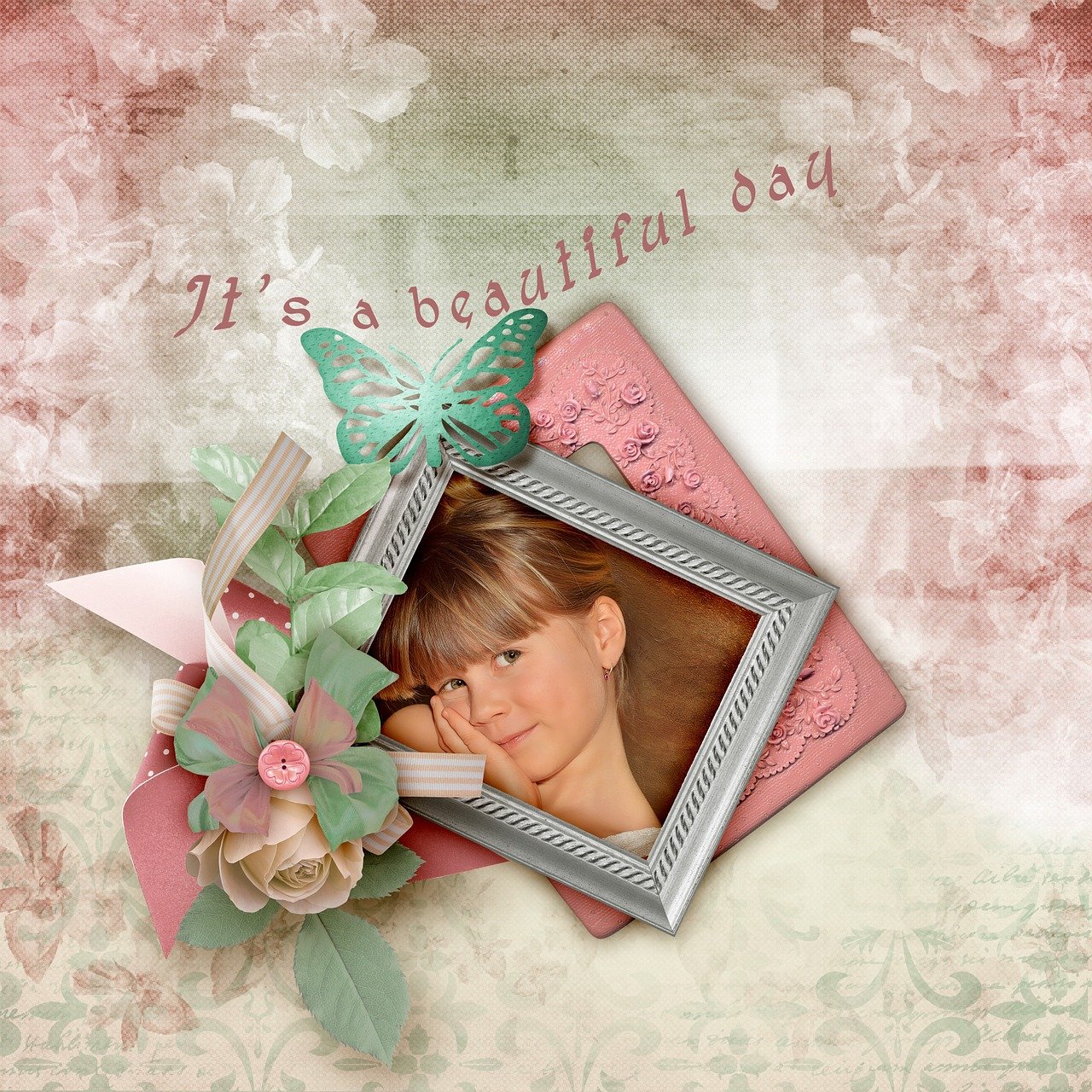
Celebrating Special Occasions
Collaborative scrapbooking is particularly popular for celebrating special occasions. Think of milestone birthdays, weddings, anniversaries or retirement parties. Instead of each person creating their separate scrapbook, friends and family members pool their creativity to craft a collective memory album. This shared effort results in a beautiful and comprehensive keepsake that reflects the perspectives and contributions of many.
Collaborative scrapbooking is particularly popular for celebrating special occasions. Think of milestone birthdays, weddings, anniversaries or retirement parties. Instead of each person creating their separate scrapbook, friends and family members pool their creativity to craft a collective memory album. This shared effort results in a beautiful and comprehensive keepsake that reflects the perspectives and contributions of many. Here’s how collaborative scrapbooking can deepen the meaning and experience of these special occasions:
Unifying Moments: Collaborative scrapbooking unifies people around a common purpose. It brings together individuals who may have diverse relationships with the honoree or different memories of the event. This shared project allows everyone to connect through their collective love and appreciation.
Surprise and Delight: When the person being celebrated receives a collaborative scrapbook, it often comes as a delightful surprise. Seeing the love, effort and thoughtfulness that went into its creation can be incredibly moving and emotional.
Shared Memories: Each contributor brings their unique memories, stories and photographs to the table. As a result, the scrapbook becomes a mosaic of shared experiences, showcasing a wide range of moments that capture the essence of the occasion.
Multigenerational Perspective: Collaborative scrapbooking often involves family members spanning different generations. This provides an opportunity to blend perspectives from grandparents, parents, siblings and younger generations, creating a rich tapestry of memories.
Inclusivity: It allows even those who may not be physically present at the event to contribute. Friends and family members from afar can send in their thoughts, photos and personal notes, making the project inclusive and heartfelt.
Creative Synergy: When multiple creative minds collaborate, innovative ideas and artistic approaches emerge. Each person brings their unique style and skills to the project, resulting in a scrapbook that is visually stunning and engaging.
Deeper Connection: Collaborative scrapbooking strengthens the bonds between participants. As they work together on a shared vision, they have opportunities to reminisce, share anecdotes and deepen their connection with one another.
Efficient and Comprehensive: Creating a single, collaborative scrapbook is often more efficient than multiple individuals making separate ones. It ensures that no significant moments or details are overlooked, resulting in a more comprehensive representation of the event.
Interactive and Engaging: A collaborative scrapbook can include interactive elements. For instance, contributors can write messages, create mini-projects within the book or add pockets for keepsakes. These features make the scrapbook more engaging and interactive.
Legacy and Tradition: Over time, collaborative scrapbooking for special occasions can become a cherished family or friend group tradition. It’s a way to mark important milestones and preserve the collective history of the group.
Personalized Touches: Despite being a group effort, collaborative scrapbooks can include personalized touches. Each contributor can add their signature or a brief personal message to the pages they’ve worked on, ensuring that their individuality shines through.
Continuing the Celebration: The collaborative scrapbook isn’t just a one-time gift. It can continue to be a source of joy and reminiscence for the person being celebrated long after the event has passed. It’s a keepsake that encapsulates the enduring love and connection of those involved.
In essence, collaborative scrapbooking is more than just a creative project; it’s a heartfelt tribute that celebrates the significance of special occasions while fostering connection and togetherness among friends and family. It’s a reminder that life’s most precious moments are best enjoyed and commemorated when shared with those we hold dear.
Looking for more insights? You’ll find them right here in our extended coverage: Retirement Memory Book | Personalized Retirement Gift – FromABirdie

Team-Building and Bonding
In the workplace, collaborative scrapbooking serves as an excellent team-building activity. Employees can come together to document company events, achievements and milestones. This not only fosters a sense of camaraderie but also helps preserve the corporate culture and history, creating a visual timeline of the company’s journey.
Collaborative scrapbooking in the workplace is a creative endeavor that goes beyond the confines of traditional team-building activities. It offers a unique platform for employees to unite, share experiences and craft a collective narrative that celebrates the company’s journey. Here’s why collaborative scrapbooking is a powerful tool for team-building and cultural preservation in the workplace:
Fostering Camaraderie: Working together on a scrapbooking project cultivates a sense of camaraderie among employees. It breaks down barriers, encourages collaboration and allows team members to bond over shared creative endeavors. As they collaborate on documenting company events, achievements and milestones, employees forge connections that extend beyond the confines of their roles.
Celebrating Achievements: Collaborative scrapbooking provides a creative outlet to celebrate the company’s achievements. It offers a tangible way to showcase milestones, awards and successes. When employees collectively contribute to the scrapbook, it reinforces a culture of recognition and appreciation, boosting morale and motivation.
Preserving Corporate Culture: Corporate culture is a vital aspect of any organization. Collaborative scrapbooking serves as a means to preserve and reinforce this culture. By documenting the company’s values, traditions and cultural nuances, employees contribute to the preservation of the organization’s identity. This visual representation of culture helps newcomers assimilate and align with the company’s ethos.
Visual Timeline: The scrapbook becomes a visual timeline of the company’s journey, charting its evolution over time. It allows employees to reflect on the past, appreciate the present and look forward to the future. This historical perspective can instill a sense of pride and ownership in employees, as they realize their role in the company’s ongoing narrative.
Creative Expression: Scrapbooking offers a unique form of creative expression. Employees can contribute their own artistic flair, personal anecdotes and unique perspectives to the project. This creative freedom empowers individuals to contribute in meaningful ways, regardless of their job roles or expertise.
Team-Building Skills: Collaborative scrapbooking hones essential team-building skills. Employees learn to communicate effectively, delegate tasks and work toward a shared goal. They develop problem-solving abilities and practice compromise, fostering a harmonious work environment.
Memorable Team-Building Activity: Unlike traditional team-building exercises, collaborative scrapbooking leaves a lasting artifact that serves as a testament to teamwork and unity. Team members can revisit the scrapbook, reliving the memories and experiences that brought them together.
Boosting Employee Engagement: Engaging employees in creative projects like scrapbooking can boost overall employee satisfaction and engagement. It provides an avenue for employees to invest their time and talents in a meaningful endeavor that goes beyond their daily tasks.
Encouraging Communication: As employees collaborate on the scrapbook, they engage in meaningful conversations about the company’s history, values and vision. This open dialogue can foster a culture of transparency and open communication within the organization.
In conclusion, collaborative scrapbooking in the workplace is a multifaceted activity that brings employees together, celebrates achievements, preserves corporate culture and fosters a sense of belonging. It transforms the workplace into a canvas where individuals can collectively paint a vibrant and meaningful picture of their company’s journey. By doing so, employees contribute to a legacy that extends far beyond their individual roles, leaving an indelible mark on the organization’s history and identity.
To delve further into this matter, we encourage you to check out the additional resources provided here: The Surprising Power of Nostalgia at Work

Community Projects
Communities, whether they’re local neighborhoods or online interest groups, can benefit from collaborative scrapbooking. Such projects often involve documenting community events, charity initiatives or shared passions. The resulting memory albums become a source of pride and a testament to the unity of the group.
Communities, whether they’re local neighborhoods or online interest groups, can truly thrive through the art of collaborative scrapbooking. This unique and creative endeavor brings people together in a way that fosters a deep sense of connection and shared purpose. It goes beyond the act of scrapbooking itself; it becomes a powerful tool for bonding and preserving the collective experiences of the community.
In the realm of local neighborhoods, collaborative scrapbooking can serve as a beautiful record of community events and milestones. Residents can come together to document neighborhood block parties, annual festivals and other communal gatherings. By pooling their photos, stories and artistic talents, they create memory albums that capture the spirit and history of their community. These albums, often displayed in local libraries or community centers, serve as a visual testimony to the vibrancy and unity of the neighborhood.
Online interest groups also find immense value in collaborative scrapbooking. These groups often form around shared passions, hobbies or causes. When members collaborate on scrapbooking projects, they not only celebrate their common interests but also contribute to a lasting legacy for their community. For instance, a group of gardening enthusiasts might create scrapbooks that showcase their favorite plants, gardening tips and shared successes. These albums become an invaluable resource for both newcomers and experienced gardeners, fostering a sense of mentorship and camaraderie within the group.
Charity initiatives also benefit from collaborative scrapbooking efforts. Volunteer groups can document their charitable endeavors, from fundraising events to humanitarian missions. These scrapbooks serve as a visual representation of the group’s dedication to making a positive impact on the world. They not only capture the good work being done but also inspire others to join in the noble cause.
The resulting memory albums from these collaborative efforts become more than just photo collections; they become sources of pride. They showcase the shared history, achievements and the essence of the community or group. Members can flip through the pages with a sense of accomplishment, knowing that they have contributed to a beautiful and tangible record of their collective journey.
In a world where digital connections often dominate, collaborative scrapbooking provides a meaningful way for communities to come together, create and celebrate their shared experiences. These memory albums are testaments to the unity, passion and strength that can be found when people collaborate and document their stories as a collective. They serve as reminders that community bonds are not just forged in the present but are also beautifully preserved for the future.
Should you desire more in-depth information, it’s available for your perusal on this page: Telling Stories Through Saved Objects: The Southeast Chicago …

Shared Creativity
Combining the artistic talents and perspectives of multiple individuals results in more diverse and visually engaging memory albums.
Combining the artistic talents and perspectives of multiple individuals results in more diverse and visually engaging memory albums. It’s a concept that not only enriches the final product but also adds layers of depth and meaning to the very act of creating these albums.
When you collaborate on a memory album, you’re essentially blending the unique artistic visions and emotional connections of each contributor. This diversity can manifest in various ways:
Varied Styles: Each person brings their own style and preferences to the project. Some may favor a clean and minimalist design, while others might gravitate towards vibrant and eclectic layouts. This amalgamation of styles can result in a visually striking album that caters to a wide range of tastes.
Diverse Perspectives: Different contributors may have been present at various moments or have had distinct relationships with the subjects in the photos. This means they bring their own emotional insights and memories to the table, adding depth and nuance to the storytelling aspect of the album.
Collaborative Creativity: Collaborative projects often lead to brainstorming and creative synergy. When multiple minds come together to plan layouts, select images or embellish pages, innovative and unexpected ideas can emerge. This collective creativity can breathe new life into the project.
Shared Memories: Creating a memory album together can be a bonding experience. As you reminisce about shared moments and discuss the significance of certain photographs, you not only strengthen your connections with each other but also deepen your understanding of the memories being preserved.
Inclusive Storytelling: In a collaborative memory album, each contributor has the opportunity to contribute their own stories and anecdotes. This inclusivity ensures that a broader spectrum of memories and perspectives is represented, making the album more comprehensive and reflective of the shared experiences.
Cross-Generational Insights: Collaborations often span generations, with different age groups participating. This intergenerational exchange can provide fresh insights into how memories evolve over time and how they are valued by people of different ages.
A Legacy of Togetherness: The act of collaborating on a memory album can, in itself, become a cherished memory. It’s a way of commemorating not just the events and people in the photos but also the bonds formed during the creative process. These albums can serve as a testament to the value of working together to preserve the past.
In essence, when you bring together the artistic talents and perspectives of multiple individuals to create memory albums, you’re not just crafting a visual keepsake; you’re fostering a collective journey of creativity, nostalgia and connection. The resulting album becomes a testament to the richness of shared experiences and the beauty of collaboration, making it a treasure that captures both memories and the magic of creating them together.
Looking for more insights? You’ll find them right here in our extended coverage: The Art of Collaboration: Studies in Creativity | Beinecke Rare Book …
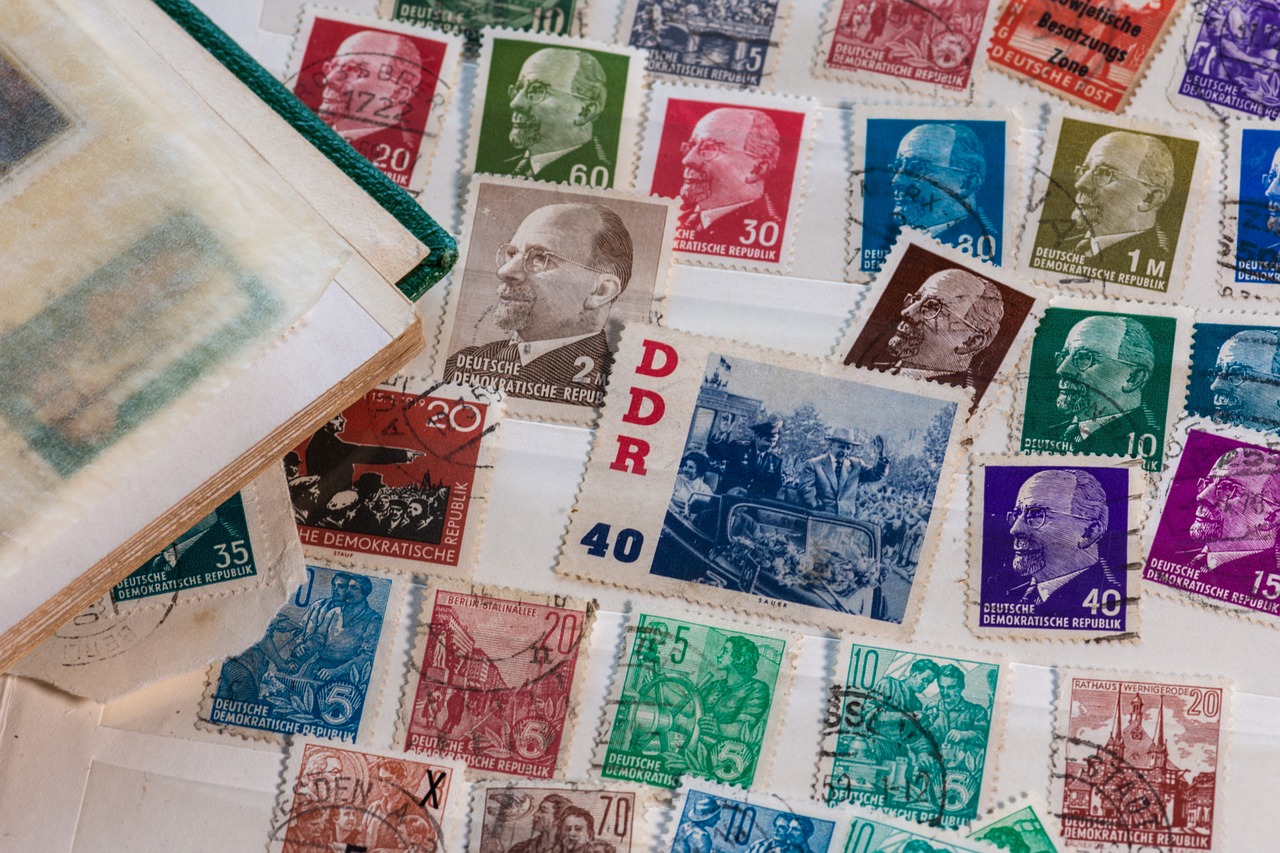
Stronger Connections
Collaborative scrapbooking strengthens relationships as participants work together, share stories and reminisce about their shared experiences.
Collaborative scrapbooking is more than just a creative activity; it’s a powerful catalyst for strengthening bonds and nurturing relationships. As participants come together to craft shared memories, the experience becomes a journey of connection, storytelling and heartfelt reminiscence. Here’s how collaborative scrapbooking can foster and enhance relationships:
1. Shared Creative Expression: Collaborative scrapbooking allows individuals to express themselves creatively while collaborating on a common project. This shared creative process encourages teamwork and the exchange of ideas, sparking inspiration and fostering a sense of unity.
2. Storytelling and Memory Sharing: One of the most beautiful aspects of collaborative scrapbooking is the opportunity to share stories and reminisce about shared experiences. Participants can recount the details, emotions and anecdotes that make those memories special. This act of storytelling not only reinforces the bonds between participants but also helps preserve the history of those shared moments.
3. Mutual Respect and Understanding: Working collaboratively on a scrapbook requires patience, compromise and effective communication. Participants learn to value each other’s contributions, leading to a deeper level of mutual respect and understanding. They can appreciate different perspectives and styles, enriching the creative process.
4. Strengthened Connections: Collaborative scrapbooking often involves family members, friends or colleagues. These shared creative endeavors provide an opportunity to strengthen existing relationships. The shared investment in a project fosters a sense of togetherness and solidarity, helping participants feel more connected to one another.
5. Celebrating Milestones and Achievements: Collaborative scrapbooks are ideal for commemorating significant milestones or achievements, such as a milestone birthday, a wedding or a team project’s completion. Creating a scrapbook together amplifies the celebration and leaves a lasting legacy of the accomplishment.
6. Emotional Resonance: The act of crafting a scrapbook together can evoke deep emotions and sentimental feelings. It’s a shared journey of reminiscence, laughter and sometimes tears. This emotional resonance strengthens the bonds between participants as they navigate the nostalgia and meaning of the memories being preserved.
7. Quality Time: Collaborative scrapbooking provides an opportunity to spend quality time together, away from the distractions of daily life. It’s a chance to be fully present with loved ones, engaging in a shared activity that is both enjoyable and meaningful.
8. A Treasured Keepsake: The finished collaborative scrapbook becomes a treasured keepsake that encapsulates the collective efforts and shared history of the participants. It serves as a tangible reminder of the relationships and experiences that matter most.
Whether you’re creating a family album, documenting a group trip or commemorating a special event, collaborative scrapbooking is a heartwarming and fulfilling way to strengthen relationships. It turns the act of crafting into a celebration of connections and shared stories, making the final scrapbook not just a work of art but also a testament to the enduring bonds between those who contributed. In this digital age, collaborative scrapbooking is a reminder that the most cherished memories are those we create and preserve together.
To delve further into this matter, we encourage you to check out the additional resources provided here: Scrapbooks and Albums – Collections Care (Preservation, Library of …
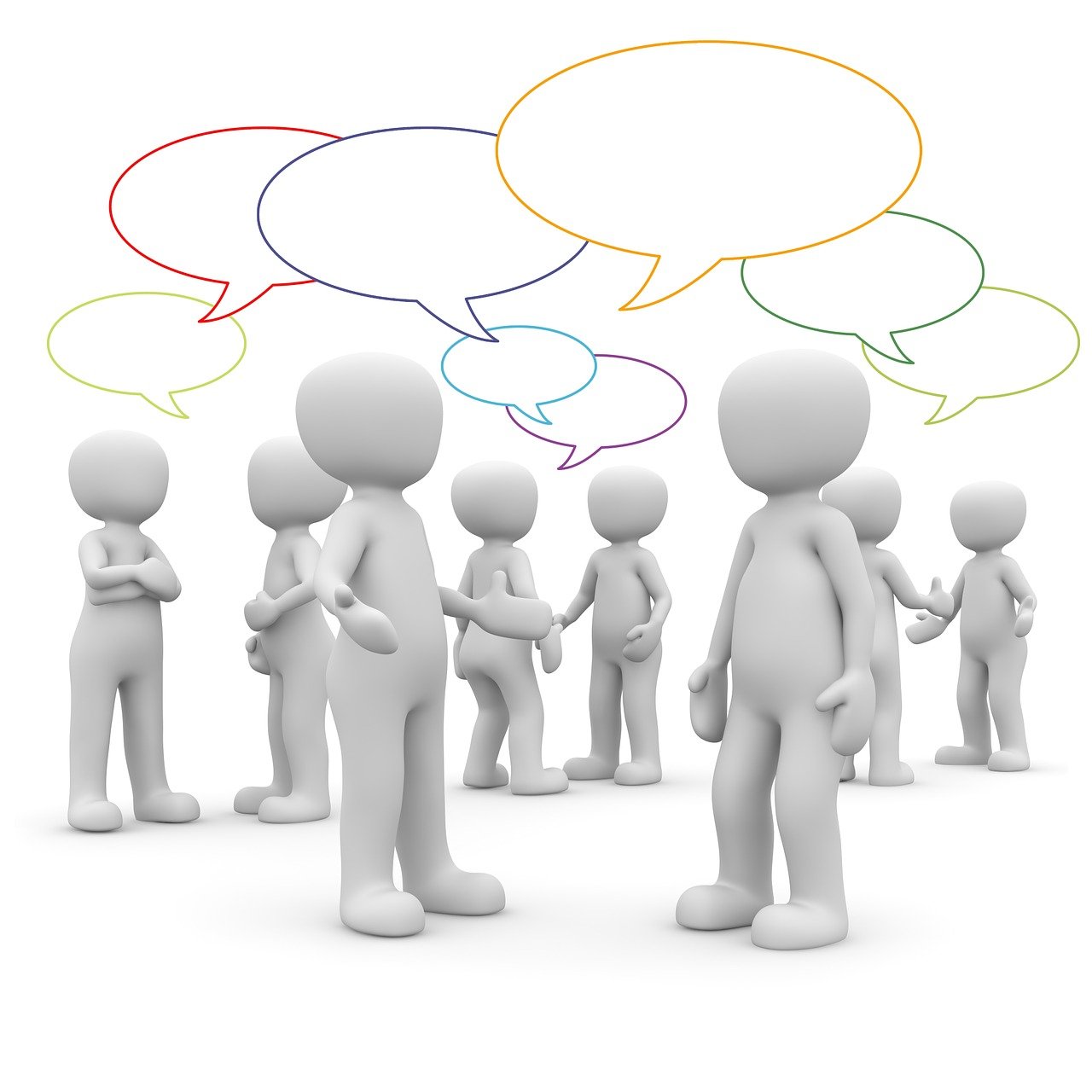
Efficiency
Instead of each person duplicating efforts, collaborative scrapbooking streamlines the process and reduces individual workloads.
Collaborative scrapbooking represents a delightful shift in the world of memory preservation, where the joy of crafting transcends individual efforts and transforms into a collective celebration of shared moments. In this modern age of connectivity, collaborative scrapbooking becomes a bridge that connects hearts and weaves together the narratives of multiple individuals, making the journey of storytelling even more profound and meaningful.
Imagine the magic that unfolds when family members, friends or even colleagues come together to craft a single, cohesive scrapbook. Instead of duplicating efforts and creating separate albums for the same event, everyone contributes their unique perspectives, memories and creative talents to a single masterpiece. This collaborative approach not only streamlines the process but also fosters a sense of togetherness, making the experience of memory preservation richer and more rewarding.
Collaborative scrapbooking is particularly powerful during milestone events and celebrations. At a wedding, for example, the bride and groom can invite guests to contribute their well-wishes, photographs and personal anecdotes to a communal scrapbook. The result is a treasure trove of love and cherished memories that goes far beyond what any single person could have created alone.
In a family setting, collaborative scrapbooking becomes a bonding experience across generations. Grandparents can share their wisdom and stories with grandchildren, adding a layer of depth to the family history. Parents and children can collaborate on school projects, creating educational scrapbooks that are both informative and fun to create.
In the workplace, collaborative scrapbooking can foster team building and camaraderie. Colleagues can come together to document company events, milestones or team achievements, creating a tangible reminder of shared accomplishments and memories.
Beyond the practical benefits of shared effort, collaborative scrapbooking reinforces the idea that memories are meant to be shared and celebrated collectively. It reminds us that life’s most beautiful moments are enhanced when we come together to commemorate and preserve them. So, the next time you’re planning a special event or simply want to connect with loved ones, consider embarking on a collaborative scrapbooking journey, where the process itself becomes a testament to the power of shared memories and creative unity.
For a comprehensive look at this subject, we invite you to read more on this dedicated page: SEL for Students: Self-Awareness and Self-Management | Greater …

Comprehensive Documentation
Collective memory albums provide a holistic view of an event, ensuring that no moment is missed or forgotten.
Collective memory albums are like time capsules that capture the essence of an event in its entirety, ensuring that every precious moment is immortalized and cherished for years to come. These albums go beyond individual perspectives, weaving together a comprehensive narrative that celebrates the collective experience.
Embracing Diversity: One of the most powerful aspects of collective memory albums is their ability to embrace diversity. Events often involve a multitude of participants, each with their unique perspectives, roles and stories to tell. By pooling together the contributions of different individuals, you create a tapestry of memories that represents the event from various angles. This diversity adds depth and richness to the storytelling, allowing viewers to see the event through multiple lenses.
No Moment Left Behind: When it comes to significant events, every moment counts. Collective memory albums leave no moment behind, ensuring that even the seemingly small or fleeting occurrences are recognized and valued. These albums become repositories of laughter, tears and shared experiences, capturing the essence of the event in all its facets. Whether it’s a spontaneous dance, a heartfelt conversation or a touching gesture, no memory is too insignificant to be included.
Filling in the Gaps: Events often unfold rapidly and it’s impossible for any single person to capture every moment. Collective memory albums step in to fill in the gaps, ensuring that nothing is missed or forgotten. They create a sense of completeness, allowing viewers to piece together the entire story even if they were not present at the event. This inclusivity is particularly valuable for preserving the history of organizations, communities or families.
Strength in Numbers: Collaborative efforts yield powerful results. When multiple individuals contribute their photos, stories and mementos to a collective memory album, it becomes a collaborative masterpiece. Each contributor adds their unique brushstroke to the canvas, resulting in a multifaceted and comprehensive portrayal of the event. This collaborative spirit not only strengthens bonds but also reinforces the significance of the shared experience.
A Gift to Future Generations: Collective memory albums are gifts to the future. They allow future generations to step into the shoes of those who lived through the event, immersing themselves in the sights, sounds and emotions of that time. These albums become a bridge between the past and the present, fostering a sense of continuity and connection across generations.
Preserving the Whole Story: Ultimately, collective memory albums serve as guardians of the whole story. They prevent selective memory or the fading of certain details with time. Instead, they uphold the integrity of the event’s narrative, ensuring that it remains authentic and complete.
In the end, collective memory albums are more than just albums; they are living testimonies to the power of unity and shared experiences. They celebrate the richness of life’s moments, both big and small and ensure that the tapestry of memories remains intact for all to see and savor. So, whether you’re commemorating a family reunion, a community event or a milestone in your organization, consider creating a collective memory album to capture the event’s full splendor and significance.
For additional details, consider exploring the related content available here Preservation and Social Inclusion – Columbia GSAPP

Memorable Keepsakes
The final product is not only a memory album but also a testament to the power of collaboration, making it even more cherished.
The final product, born from a collective effort, transforms into more than just a memory album; it evolves into a profound testament to the extraordinary power of collaboration. As each contributor adds their unique touch, whether through heartfelt anecdotes, artistic creativity or shared laughter, the album transcends its pages and embodies the beauty of unity. It becomes a living testament to the bonds forged through shared experiences and collective storytelling, making it not just cherished but an enduring symbol of the strength that lies in coming together to celebrate life’s moments.
For a comprehensive look at this subject, we invite you to read more on this dedicated page: BPG Scrapbooks – Wiki

Getting Started with Collaborative Scrapbooking
If you’re eager to embark on a collaborative scrapbooking project, here are some steps to get you started:
Embarking on a collaborative scrapbooking project can be a truly rewarding experience, as it allows you to share memories, creativity and the joy of storytelling with others. To kickstart your collaborative scrapbooking journey, consider these essential steps:
Define Your Vision: Start by clarifying the vision and purpose of your collaborative scrapbook. Are you commemorating a special occasion, a shared adventure or simply documenting your collective memories? Determine the theme, tone and overall style you want to achieve. A clear vision serves as the guiding star throughout the project.
Select Your Team: Choose your fellow scrapbookers wisely. Whether it’s family members, friends or a group with a shared interest, make sure everyone is enthusiastic and committed to the project. Discuss roles and responsibilities, ensuring that each participant understands their part in bringing the scrapbook to life.
Collect and Organize Content: Gather the photos, mementos and stories that will populate your scrapbook. Encourage each participant to contribute their own materials, whether it’s photographs from their personal collections, written memories or themed embellishments. Create a central repository or digital folder to keep everything organized.
Set Guidelines and Themes: Establish clear guidelines for the project. Decide on the scrapbook’s size, format and layout style. Additionally, consider setting themes or chapters that will guide the content for each section of the scrapbook. Themes can help unify the project and ensure that everyone’s contributions align with the overall vision.
Allocate Responsibilities: Distribute specific responsibilities among team members. Assign roles such as layout design, photo selection, journaling and embellishment creation. Each member can focus on their area of expertise or interest, ensuring that the workload is evenly distributed and that everyone’s talents shine through.
Communication and Collaboration: Open and consistent communication is key to successful collaboration. Establish regular check-ins or meetings to discuss progress, share ideas and address any challenges. Utilize collaboration tools like shared documents, digital scrapbooking software or online project management platforms to streamline the process.
Design and Layout: Decide on the layout and design elements for your scrapbook. Consider creating templates or style guides to maintain visual consistency across the pages. Allow each team member to design their assigned pages while adhering to the established guidelines.
Assembly and Review: As individual pages are completed, assemble them in the order specified by your theme or story. Review each page for consistency, ensuring that fonts, colors and overall design align with the project’s vision. Collaborate on adjustments and fine-tuning as needed.
Adding Personal Touches: Encourage each participant to add personal touches to their pages. This might include handwritten notes, anecdotes or personal reflections that provide context and emotional depth to the scrapbook. These individual contributions enrich the storytelling aspect.
Final Review and Presentation: Before finalizing your collaborative scrapbook, conduct a comprehensive review of the entire project. Ensure that all elements flow seamlessly from page to page. Make any necessary adjustments to maintain consistency and coherence. Once you’re satisfied, prepare the scrapbook for presentation or preservation.
Celebrate and Share: Finally, celebrate your collaborative achievement. Share the completed scrapbook with each team member and consider hosting a gathering or event to commemorate the project. Reflect on the memories you’ve captured and the creative journey you’ve undertaken together.
Collaborative scrapbooking is a beautiful way to strengthen bonds, create lasting memories and produce a keepsake that embodies the collective spirit of your group. By following these steps and embracing the collaborative process, you’ll create a scrapbook that not only preserves cherished memories but also showcases the power of shared creativity and storytelling.
You can also read more about this here: Newlywords: Memory Book Online | Collaborative Memory Books
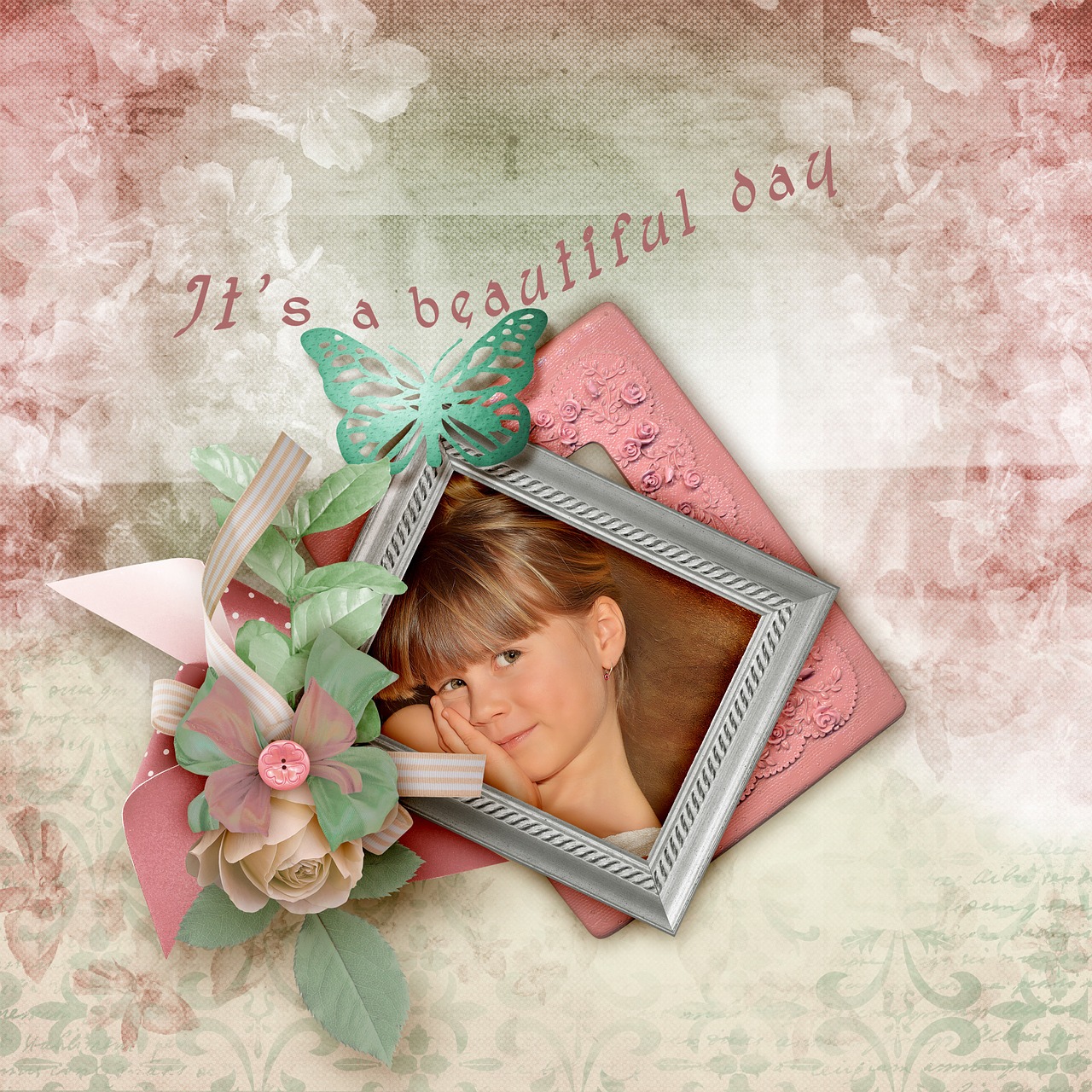
Select an Event
Choose a special occasion or shared experience that you’d like to commemorate.
Selecting a special occasion or shared experience to commemorate is like choosing a canvas on which to paint the vibrant and lasting strokes of your memories. It’s a decision that sets the stage for a creative journey filled with emotion and significance. Here’s why this step is so crucial and how it can enrich your memory preservation:
Meaningful Focus: Choosing a specific occasion or shared experience gives your memory preservation a meaningful focus. It allows you to zoom in on a particular moment in time, whether it’s a birthday celebration, a family vacation, a graduation, a wedding or a simple day of togetherness. This focus imbues your commemoration with depth and relevance.
Emotional Connection: Special occasions and shared experiences are often brimming with emotions. They carry the joy, love, laughter and sometimes even challenges that define those moments. By choosing to commemorate one of these, you’re capturing not just the visuals but also the emotional essence of the event, making your memory preservation more heartfelt.
Storytelling Potential: Every occasion or shared experience is a story waiting to be told. It has a beginning, middle and end, with unique characters, plot twists and resolutions. Choosing one allows you to weave a narrative that unfolds as you revisit your memories, creating a cohesive and engaging story within your memory preservation.
Creating Cohesion: Your memory preservation efforts are often organized into albums, scrapbooks or digital presentations. By selecting a specific occasion or shared experience, you create cohesion within your collection. This cohesion makes it easier to curate and present your memories, whether you’re sharing them with loved ones or enjoying them privately.
Reflecting on Growth: Special occasions often mark milestones in life. They provide opportunities for reflection on personal and collective growth. Commemorating these moments allows you to trace your journey, whether it’s watching your children grow, celebrating achievements or marking significant life changes.
Thematic Inspiration: Focusing on a specific occasion or shared experience can inspire thematic creativity. You can align your memory preservation with the theme and mood of the event, from choosing colors and designs to incorporating related memorabilia and mementos. This thematic approach adds an extra layer of richness to your commemoration.
Evolving Traditions: Many special occasions are rooted in traditions and rituals. Choosing to commemorate these occasions allows you to capture the evolution of these traditions over time. You can document how your family or community celebrates and how these celebrations have changed or remained consistent.
Connecting Generations: Commemorating shared experiences often involves multiple generations. Whether it’s a family reunion, a holiday gathering or a milestone event, these occasions offer opportunities for intergenerational connection. Your memory preservation can bridge the gap between generations, preserving the stories and traditions that connect your family’s past, present and future.
In conclusion, the act of choosing a special occasion or shared experience to commemorate is the foundation of memory preservation. It infuses your efforts with meaning, emotion and storytelling potential. It allows you to reflect on growth, create cohesion and celebrate traditions. Ultimately, it transforms your memories into timeless treasures that capture not just the visuals but also the heart and soul of the moments you hold dear. So, take your time to select that meaningful occasion or shared experience, for it is the canvas upon which your memories will come to life with vivid colors and lasting significance.
Looking for more insights? You’ll find them right here in our extended coverage: A Provider’s Guide to Brief Cognitive Behavioral Therapy

Gather Participants
Invite friends, family members or colleagues to join the project.
Inviting friends, family members or colleagues to join your project can be a transformative step that not only enhances the project itself but also fosters connections and collaboration. Here’s an extension of the idea:
“Inviting friends, family members or colleagues to join the project opens up a world of possibilities and enriches the experience in several meaningful ways:
Shared Creativity: Collaborating with others brings a diversity of perspectives and creative ideas to the table. Each participant can contribute their unique skills, talents and insights, resulting in a project that’s more dynamic and well-rounded.
Strengthened Bonds: Working together on a project can deepen your relationships. Whether it’s with family, friends or colleagues, the shared experience fosters a sense of togetherness, creating lasting memories and strengthening your connections.
Learning and Growth: Collaborative projects provide an excellent opportunity for learning and personal growth. You can learn new skills, gain fresh perspectives and discover hidden talents as you work alongside others with different expertise.
Efficiency and Productivity: More hands on deck can mean faster progress and increased productivity. Tasks that might be time-consuming or challenging for one person can be tackled more efficiently when distributed among a group.
Resource Sharing: Collaborators often bring their own resources to the project, such as equipment, materials or even financial support. This sharing of resources can make the project more feasible and versatile.
Networking: Collaborative projects can lead to valuable networking opportunities. Working with colleagues or acquaintances on a shared goal can open doors to new connections and potential collaborations in the future.
Accountability: When others are involved, there’s a shared sense of responsibility to see the project through to completion. This accountability can help keep everyone on track and motivated.
Diverse Perspectives: Different individuals bring their unique viewpoints and cultural backgrounds to the project, enriching it with diversity and ensuring a well-rounded outcome that can appeal to a wider audience.
Fun and Enjoyment: Collaboration can make the project more enjoyable and fun. Sharing laughter, challenges and triumphs with others can turn the process into a memorable adventure.
Celebration of Achievements: Completing a collaborative project is a cause for celebration. It’s an opportunity to acknowledge everyone’s contributions and share in the satisfaction of a job well done.
So, whether you’re embarking on a creative endeavor, a community initiative or a professional project, don’t hesitate to extend an invitation to others. The collaborative journey not only enhances the project’s outcome but also creates lasting bonds, fosters personal growth and turns the endeavor into a shared adventure worth cherishing.”
Additionally, you can find further information on this topic by visiting this page: Preservation and Social Inclusion – Columbia GSAPP
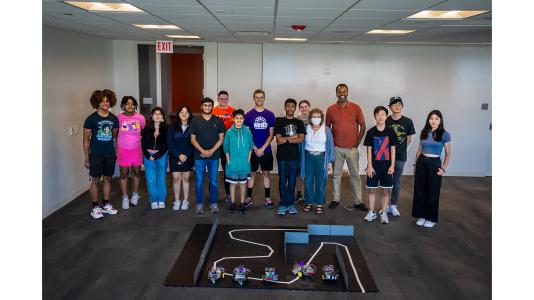
Assign Roles
Allocate responsibilities such as photo collection, layout design, journaling and embellishments.
Assigning roles and responsibilities within a scrapbooking or memory-keeping team is a strategic approach that can streamline the creative process and lead to a more harmonious and efficient collaboration. It’s like orchestrating a symphony where each member contributes their unique expertise to compose a masterpiece. Here’s an extended exploration of this idea:
1. Photo Collection Maestro: The photo collection role is pivotal in the memory-keeping process. This individual or team member is responsible for gathering and curating the photos that will be featured in the scrapbook. They ensure that the visual narrative aligns with the theme or purpose of the project. This role requires a keen eye for storytelling through images and a knack for organizing photo archives.
2. Layout Design Virtuoso: The layout designer is akin to the architect of your scrapbook pages. They possess a creative vision that transforms a blank canvas into a visually appealing and cohesive composition. This role involves arranging photos, selecting backgrounds and strategically placing embellishments to create an aesthetically pleasing flow. A layout designer is a master of balance and harmony.
3. Journaling Wordsmith: Journaling is the soul of a scrapbook, providing context and emotional depth to your memories. The journaling wordsmith is tasked with crafting meaningful captions, anecdotes and reflections that accompany the photos. Their writing should evoke the emotions and sentiments associated with each memory, enhancing the storytelling aspect of the scrapbook.
4. Embellishment Artisan: Embellishments are the spice that adds flavor to your scrapbook pages. The embellishment artisan is responsible for choosing and placing decorative elements like stickers, ribbons, brads and more. Their creativity knows no bounds as they find innovative ways to enhance the visual appeal of each page without overwhelming it.
5. Project Coordinator: In larger collaborative scrapbooking efforts, a project coordinator may be needed. This role oversees the entire process, ensuring that each team member’s contributions align with the overall vision. They manage timelines, address any creative differences and keep the project on track from inception to completion.
6. Technical Guru: In the digital age, a technical guru might be essential for digitizing and editing photos, creating digital templates or utilizing software for the layout design. They handle the technical aspects, ensuring that the digital or physical scrapbook meets the desired specifications.
7. Preservation Specialist: For those creating heritage or archival scrapbooks, a preservation specialist may be vital. They possess knowledge of archival-quality materials and techniques to ensure the long-term preservation of your memories. Their expertise safeguards your scrapbooks from deterioration over time.
8. Collaboration and Communication: Effective communication and collaboration are key. Assigning responsibilities should be a collaborative decision and team members should maintain open lines of communication throughout the creative process. Regular check-ins and brainstorming sessions can lead to innovative ideas and cohesive results.
By allocating responsibilities in your scrapbooking team, you not only optimize each member’s strengths but also foster a sense of camaraderie and shared accomplishment. It’s a collaborative art form where everyone plays a distinct role in weaving together the threads of your memories into a beautiful and meaningful tapestry.
If you’d like to dive deeper into this subject, there’s more to discover on this page: Interactive Techniques (Kevin Yee)

Set a Timeline
Establish a timeline for the project to ensure it stays on track.
Establishing a timeline for the project is a crucial step in ensuring its successful completion. This timeline serves as a roadmap, guiding the team through the various phases and tasks required to reach the project’s goals.
By setting specific milestones and deadlines, you not only create a sense of structure and direction but also foster accountability among team members. Everyone involved will have a clear understanding of what needs to be done and when it needs to be completed.
Furthermore, a well-planned timeline allows for effective resource allocation. It helps in identifying potential bottlenecks or areas where additional resources may be required to keep the project on track. This proactive approach can prevent delays and budget overruns.
Moreover, a project timeline promotes effective communication. It enables you to share progress updates with stakeholders, clients and team members, keeping everyone informed and aligned with the project’s status. This transparency builds trust and confidence in the project’s management.
In addition, a timeline allows for better risk management. By breaking the project into smaller, manageable segments with associated deadlines, you can identify and address issues as they arise, reducing the likelihood of major setbacks.
In conclusion, establishing a project timeline is not just about keeping things on track; it’s about ensuring efficiency, accountability, communication and risk mitigation. It’s a fundamental tool for successful project management, helping you navigate the complexities of your project with confidence and precision.
You can also read more about this here: Newlywords: Memory Book Online | Collaborative Memory Books

Choose a Theme
Select a theme or style that reflects the essence of the event.
Choosing a theme or style that resonates with the essence of your event is like setting the stage for a captivating story. It’s a creative decision that not only enhances the visual appeal but also deepens the overall experience for both you and your guests. Here’s how to go about it:
1. Understand the Event’s Essence: To select the perfect theme or style, begin by understanding the essence of the event. What is its purpose, mood or significance? Is it a joyous wedding celebration, a sophisticated gala, a whimsical birthday party or a heartfelt family reunion? By identifying the core emotions and objectives, you can align your theme with the event’s unique character.
2. Reflect on Personal Preferences: Consider your personal preferences and tastes, as well as those of your guests if applicable. What resonates with you or holds sentimental value? Your event should be an authentic reflection of your personality or the purpose behind it. If it’s a wedding, for instance, you might draw inspiration from your love story, hobbies or cultural background.
3. Explore Popular Themes: Research popular themes or styles that are relevant to your event. Themes can range from vintage and rustic to modern and minimalist, while styles might include elegant, bohemian or tropical. Exploring these options can spark ideas and help you visualize how they align with your event’s essence.
4. Consider Practicality: Think about the practical aspects of your theme or style. Is it feasible within your budget and resources? Ensure that the chosen theme can be executed without overwhelming logistics or expenses. A well-thought-out theme should enhance the event, not complicate it.
5. Create a Cohesive Atmosphere: Your chosen theme or style should extend to every aspect of the event, from invitations and decorations to attire and entertainment. A cohesive atmosphere creates a sense of immersion, where guests feel transported into a unique and memorable experience.
6. Personalize the Details: The magic often lies in the details. Personalize your chosen theme or style by incorporating meaningful details and touches. For a rustic wedding, this might mean using wooden signage and mason jar centerpieces. For a sophisticated gala, it could involve elegant table settings and candlelit ambiance.
7. Flexibility and Adaptability: While having a clear theme is important, be flexible and adaptable. Sometimes, unexpected factors may require minor adjustments. The key is to maintain the overall essence and mood while making necessary changes.
8. Seek Inspiration: Don’t hesitate to seek inspiration from event planning resources, magazines or online platforms. Visual inspiration boards and Pinterest can be valuable tools for collecting ideas and refining your theme.
In the end, selecting a theme or style that resonates with the essence of your event is about creating a cohesive and memorable experience. It’s the thread that ties all elements together, turning a gathering into a narrative that leaves a lasting impression on both you and your guests. So, embrace the opportunity to infuse your event with personality, meaning and creativity and watch as it unfolds into a beautifully orchestrated and unforgettable occasion.
To expand your knowledge on this subject, make sure to read on at this location: Newlywords: Memory Book Online | Collaborative Memory Books
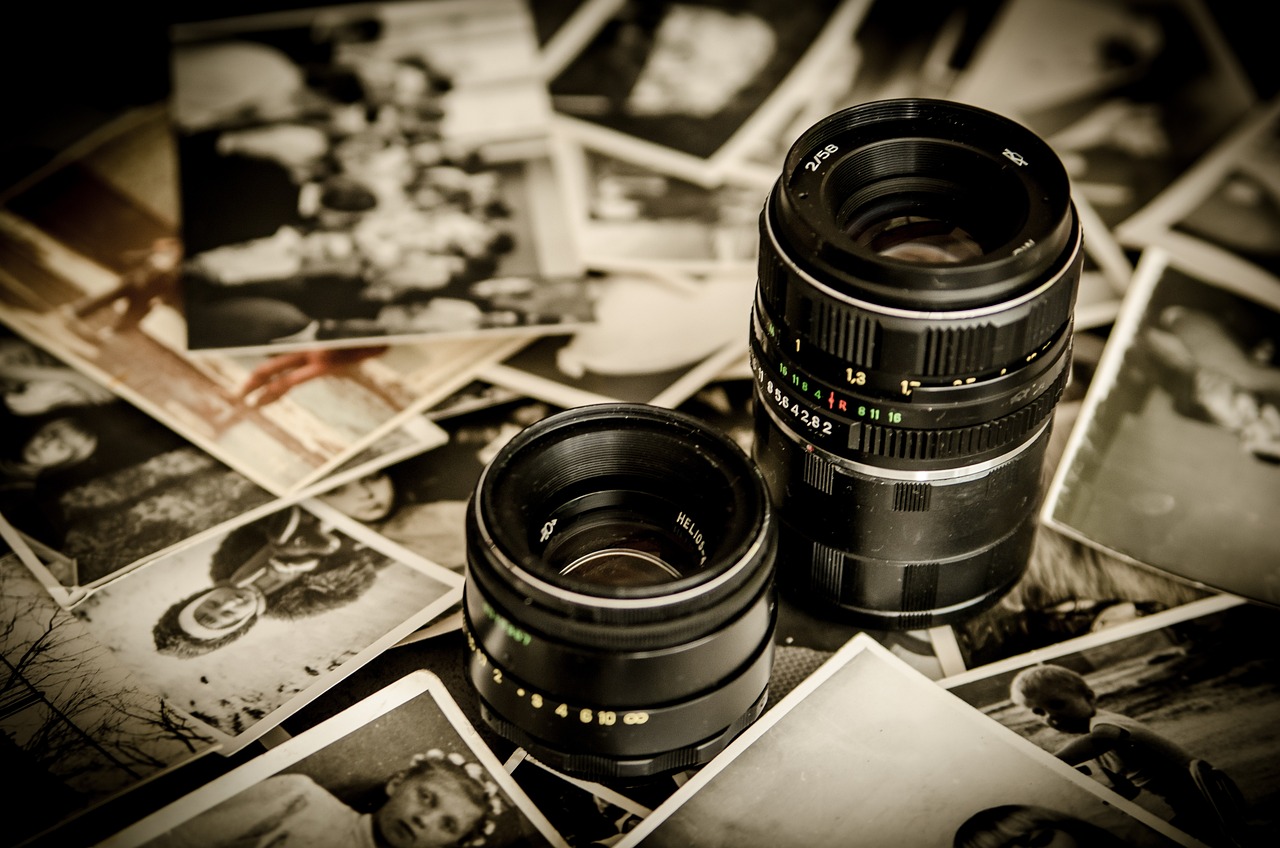
Use Digital Tools
Collaborative scrapbooking can be done physically or digitally. Consider using online scrapbooking platforms for ease of sharing and collaboration.
Collaborative scrapbooking is a delightful way to bring together the creative energies and memories of friends and family, whether they’re near or far. While it can be achieved through physical gatherings, the digital age has made it even more accessible and convenient. Here’s how you can leverage online scrapbooking platforms for seamless sharing and collaboration:
1. Global Participation: Online scrapbooking platforms break down geographical barriers. Loved ones from different corners of the world can contribute to the same scrapbook project, making it a truly global collaboration. Whether it’s a family reunion, a milestone celebration or a memory book for a friend, everyone can participate regardless of their location.
2. Real-Time Collaboration: These platforms offer real-time collaboration features. Multiple users can work on the same project simultaneously, adding photos, journal entries and embellishments. This dynamic interaction brings a sense of togetherness, as you can see changes happening in real-time, just like you would when crafting together in person.
3. Convenience and Accessibility: Online scrapbooking platforms are accessible 24/7 from any internet-connected device. This means that contributors can add their memories and creativity at their convenience, whether it’s during a lunch break, late at night or over the weekend. It eliminates the need to coordinate physical meetups and schedules.
4. Shared Digital Assets: These platforms often provide a centralized location for sharing digital assets. You can upload photos, templates and design elements to a shared library that all collaborators can access. This ensures consistency in style and design throughout the project.
5. Version History: Just like in collaborative document editing, many online scrapbooking platforms offer version history. This allows you to track changes, revert to previous versions and see who contributed what. It’s a valuable feature for maintaining the integrity of your scrapbook.
6. Commenting and Feedback: Collaborators can leave comments and feedback on specific elements within the scrapbook. This interactive aspect adds depth to the storytelling process and allows for meaningful discussions about the memories being shared.
7. Easy Sharing: Once your collaborative scrapbook is complete, these platforms often offer simple sharing options. You can generate a digital version or order printed copies to distribute to contributors and other family members. It’s an excellent way to ensure that everyone involved gets to enjoy the finished product.
8. Privacy and Security: Most online scrapbooking platforms prioritize privacy and security. You can control who has access to your project, ensuring that your memories remain private and secure.
9. Ongoing Memories: Collaborative scrapbooks can be ongoing projects. You don’t have to limit them to specific events or occasions. It can be a continuously evolving space where family and friends come together to document and celebrate life’s moments as they happen.
In today’s interconnected world, online scrapbooking platforms offer a convenient and inclusive way to collaborate on preserving memories. They bridge distances, allow for real-time interactions and make it easy to create lasting keepsakes that reflect the collective experiences and creativity of your loved ones. So, whether it’s a family photo album, a tribute to a friend or a collaborative project with a group of fellow crafters, consider going digital to make your shared scrapbooking endeavors even more enjoyable and accessible.
Additionally, you can find further information on this topic by visiting this page: “With a hint she will remember”: Collaborative Storytelling and …

Collaborative scrapbooking is a beautiful way to come together, celebrate shared experiences and create lasting memories. Whether you’re commemorating a milestone, fostering workplace unity or building a sense of community, these collective memory albums serve as tangible reminders of the power of togetherness. So gather your loved ones or colleagues, start a collaborative scrapbooking project and watch as the pages of your collective memory album come to life, preserving your most cherished moments for generations to come.
“Collaborative scrapbooking is more than just crafting; it’s a heartfelt gathering, a celebration of shared experiences and a means to etch lasting memories. Be it a significant milestone, a workplace endeavor or an initiative to strengthen community bonds, these collective memory albums stand as testaments to the potency of togetherness. Rally your loved ones or colleagues, embark on a collaborative scrapbooking journey and witness the pages of your collective memory album spring to life—capturing and immortalizing your dearest moments, a legacy for generations ahead.”
Don’t stop here; you can continue your exploration by following this link for more details: Community Archival Practice: Indigenous Grassroots Collaboration …
More links
If you’d like to dive deeper into this subject, there’s more to discover on this page: Scraps of Pop | Writing the “American” Self
